The idea of this event from
Ohno san was to bring the expertise from the worldwide inkjet community to the
Japanese market
Nearly 200 attendees from
interested parties watched 2 days of presentations from a diverse range of
specialities. Industry Experts in drive electronics, integration, printhead
design,
So the question was could Ohno
san pull of his experiment to bring a European style inkjet conference to a
Japanese audience. There have been similar attempts in the US and the Middle
East that have quite frankly fallen short of the mark. But if anyone could do
it, it would be Ohno san.
There is an old English phrase “bringing coals to Newcastle” meaning bringing something to an area already rich in it, that surely should apply here, but as Ohno san says, whilst Japan may dominate the development and production of inkjet printheads, they fall behind in the application of the technology.
Ohno san started the
conference with a Japanese saying “the frog in the well cannot see the ocean”
meaning he believes Japanese corporations often look to see what their
neighbours are doing but fail to see the bigger picture. So he decided to bring
the ocean to the frog.
The event was co hosted by respected industry journalist, Nessan Cleary, who opened with a presentation about how the inkjet market has transformed itself over the years, the current trends and significant market developments. This was a perfect foundation on which the following speakers could build.
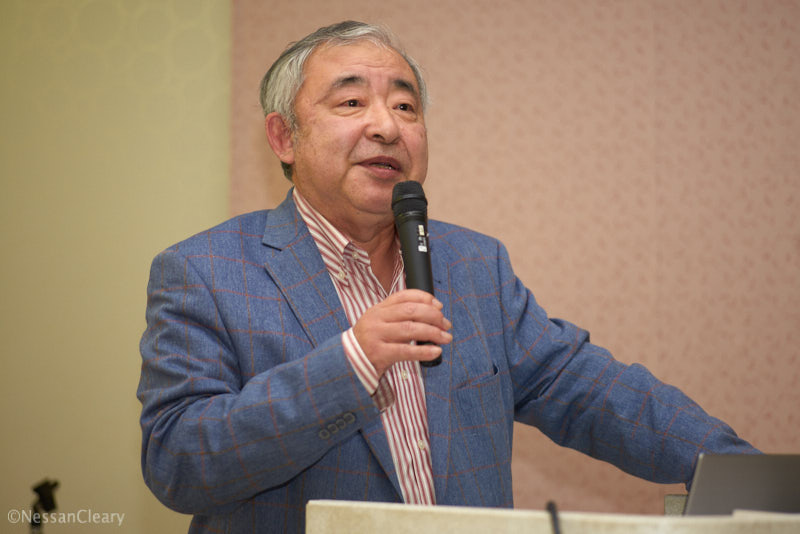 Akiyoshi Ohno, principal behind Ohno InkJet Consulting
Akiyoshi Ohno, principal behind Ohno InkJet Consulting
I spent most of last week in Tokyo for the inaugural Japan Inkjet Business Conference, organised by Aki Ohno of Ohno InkJet Consulting, and which I’m going to cover here in this story.
But in the interests of full disclosure, I should point out that for once I was not there as an impartial observer but rather to deliver the keynote speech. Japanese readers will know that many of the stories from this website are also published on the OIJC site.
There’s too much to get through in one story so I’m going to split it into two parts, and take the various presentations out of order so that I can create a narrative that puts each element into its relevant context.
Naturally several of the presentations centred around inkjet printheads. Martin Schoeppler, CEO of Fujifilm Dimatix talked about the virtues of MEMs technology, particularly in relationship to the Samba heads, while Shin Ishikura, manager of Kyocera’s Inkjet Design Centre, argued for bulk piezo, which made for an interesting comparison.
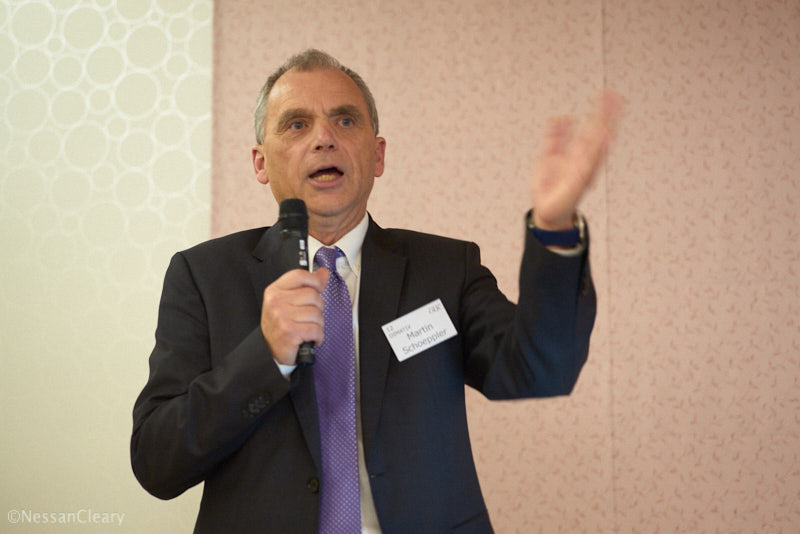 Martin Schoeppler, CEO and president of Fujifilm Dimatix
Martin Schoeppler, CEO and president of Fujifilm Dimatix
Fujifilm, which acquired Dimatix (formerly Spectra) in 2006, has made a significant investment to set up a dedicated silicon fab facility in Santa Barbara, California. Schoeppler, who has a wry sense of humour, describing Fujifilm as a “good asset for Dimatix” says: “We are very high tech orientated. He states: “We look for the long life, robust technology. I think that cost per dollar is important but for me you have to see the lifetime of the printhead so that over time the cost is different.” He described silicon as a very robust material that’s very well-suited to the needs of high volume manufacturing.
In all, Schoeppler gave a good overview of how inkjet technology has developed across several markets including wide format, industrial and textile, and of how he sees Dimatix’s place in this. It was too detailed to cover in depth here but I will come back to Fujifilm Dimatix in a later post, and in particular to its use of the MEMs process.
As noted, Kyocera has taken a different approach and so Ishikura described his reasons for using bulk piezo in the new KJ4 series heads. Essentially this comes down to the very high cost of investment necessary to build a silicon fab coupled with relatively low yields in Silicon wafers versus Kyocera’s proven expertise in working with piezo ceramic sheets.
Ishikura reiterated Kyocera’s role in providing its original KJ4 series heads to many of the early single pass production printers, and then went on to point out that the market now demands more throughput and more laydown, with greater robustness and less variation as well as a wider operating window – all of course without pushing up the prices. I’ve already covered the new KJ4EX series, which is just starting to appear now, from Ishikura’s presentation at the IJC last year and I’m planning to write a deeper dive into this series at some point later this year.
Bent Serritslev, senior vice president for business development in APAC region for Memjet, provided us with an overview of the Memjet printheads, including the new DuraLink and DuraFlex heads. I’ve already covered these in some detail but Serritslev did underline that even though Memjet has developed a complete print engine, there’s still room for OEMs to create unique products. He explained: “They can differentiate themselves by having their own workflow and transport system. We expect OEMs to do a little bit of electronics and they look after the quality control and any certification needed.”
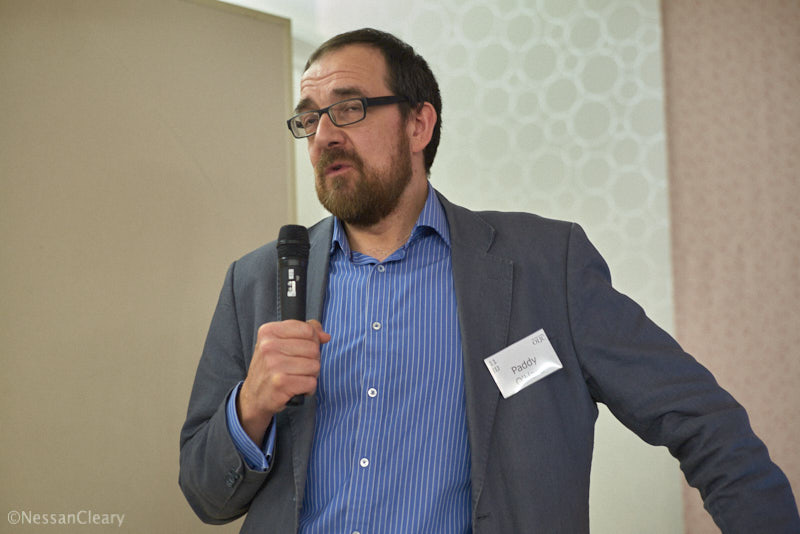 Paddy O’Hara, director of business development for Industrial InkJet.
Paddy O’Hara, director of business development for Industrial InkJet.
Paddy O’Hara, business development manager for Industrial InkJet, gave us a system’s integrator view of printheads. He talked about the KISS principle – Keep It Simple, Stupid – or perhaps, Keep Inkjet Systems Simple – noting: “The more complex the system the longer the R&D and the more potential for failure.
IIJ takes advantage of the compact size of Konica Minolta heads to squeeze four colour bars into a very small module that fits easily onto most kit. O’Hara added: “We don’t need the arch shape or pining between the colours, which gives higher productivity and lower cost.” He pointed out that ink is important – the clue is in the inkjet name – saying: “We put a lot of resource into testing the ink. We get the ink suppliers to reformulate the ink to make it work the way we like to work. It helps that the Konica Minolta heads have internal heaters and simple waveforms.”
Of course, there are still plenty of challenges in inkjet and Debbie Thorp, business development manager for Global Inkjet Systems, talked about using software to deal with some of this complexity, saying: “Software can improve system performance and can disguise problems. You need a closed loop system to do this in real time.”
She noted: “Printheads are a wonderful technology but they are not always perfect. There can be a variation in drop size and so on that, for example, can lead to banding effects.” She continued: “So you have to have a good strategy for missing nozzles, for stitching, and you need to make sure that the heads and inks are kept at the right temperature.”
She pointed out that solid flat colours are hard to achieve with inkjet, adding: “In the functional world we want to be able to put down a very uniform layer, which is the same problem as the solid flat colours. So we use the same strategies for stitching and for missing nozzles and verification for a closed loop workflow.”
Thorp also showed a video where inkjet was used to add a coating to an automotive part – the casing for a wing mirror – held by a robotic arm to present it to the head and with a long throw distance. She added: “We achieved this distance through wave form development using a tool that is very important to the market from ImageXpert.”
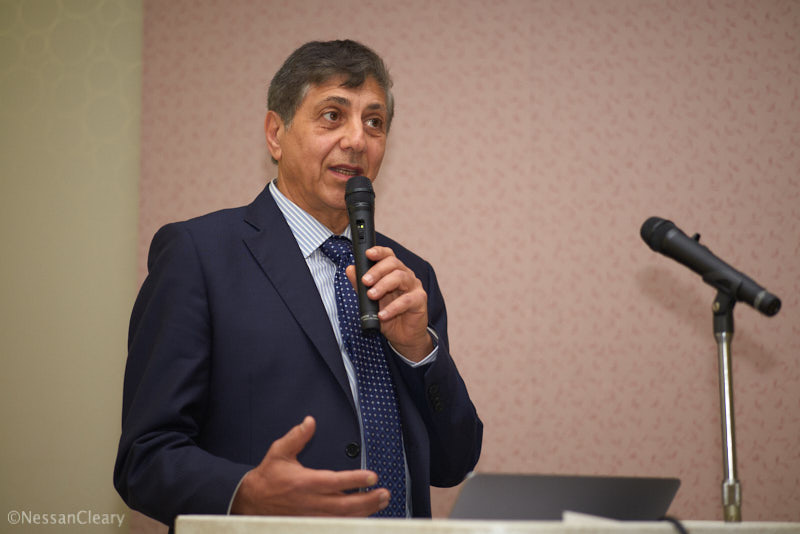 Yair Kipman, president of ImageXpert
Yair Kipman, president of ImageXpert
As it happened, Yair Kipman, president of ImageXpert, also made a separate presentation. Many readers and certainly most printer and end users are probably not aware of this company, though ImageXpert plays an extremely important role in the development of inkjet printing devices through its range of drop watcher solutions. Drop watchers are used to film and analyse the ink drops as they are produced from the printheads, which allows systems developers to fine tune the output, whether by tweaking the ink formulation, or the temperature and degree of viscosity control or the printhead electronics and waveforms. Kipman explained: “We can work with 1pl minimum drop size – that’s the direction of the market towards smaller drop sizes.”
He added: “We use GIS as a strategic partner because they have opened their software so we can do automatic waveform optimsation.” The company has developed a range of different solutions based around its standard drop watcher to handle different printers, such as sheetfed or roll to roll. There’s also a system designed to fit into a production line. Kipman explains: “It’s very small. So, before you print in the morning you can verify that all the nozzles are firing at the same volume and velocity.”
This is such a specialized area that it’s worth a separate story in its own right, though with Fespa and Drupa still to come this might take me a while to get around to.
Another vital component that’s often overlooked is the pumps that are used to push the ink around a print system, which Nobuhiko Hosobata, sales manager for KNF Japan, discussed. KNF uses a diaphragm-based design, which is reasonably compact and gives long service life with little maintenance necessary. He described how the current trends towards faster printers with new inks featuring nanoparticles and high pigment loads as well as functional inks such as conductive inks with silver particles or organic polymers, all cause problems for pumps. This is mainly down to ablation through the pigment particles as well as the need for improved chemical resistance and the need to cope with higher viscosity inks that have less flow. Consequently KNF has introduced a new FP150 and FP400 series pumps that feature five diaphragms to cope with these issues.
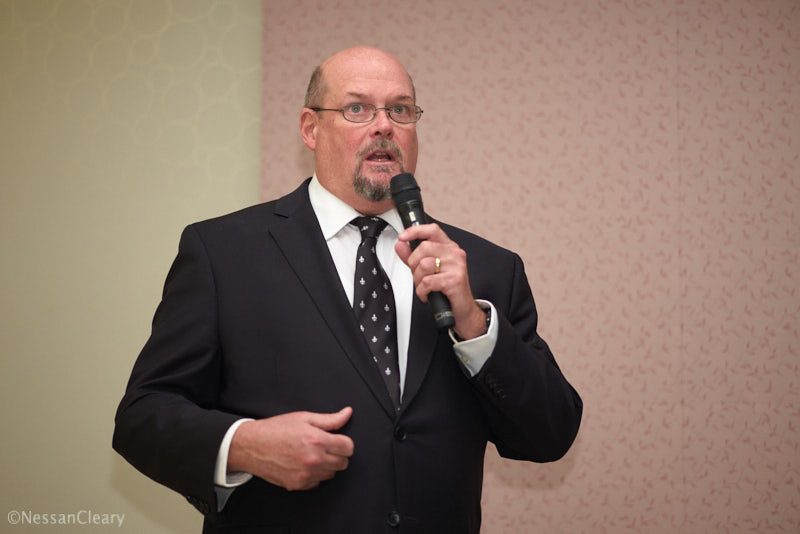 Michael Beck, vice president of worldwide sales for Phoseon
Michael Beck, vice president of worldwide sales for Phoseon
Michael Beck, vice president of worldwide sales for Phoseon, talked about the advantages of using LEDs rather than mercury lamps to cure UV inks. He pointed out that some of the patents governing mercury lamp curing are over a hundred years old, adding: “So when Phoseon started making LED products in 2002 we were told that it would never work.” But nowadays LED curing is widely used in most print markets with a number of benefits, including high energy savings, as well as lower risk to operators, and of course, LEDs will typically last the lifetime of the print system they’re integrated with.
Phoseon is also looking into UVC, which allows lamps with very low wavelengths that would lead to more photo initiators, and Near InfraRed or NIR, which offers an interesting option for drying water-based inks.
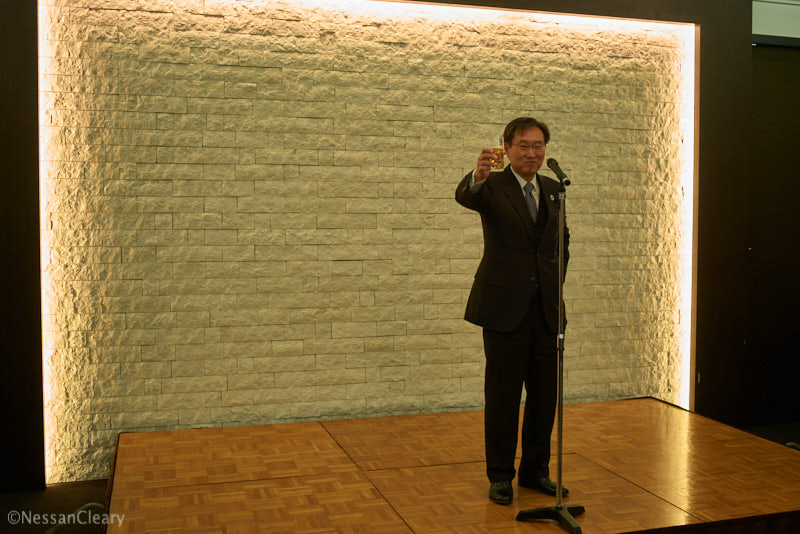 Minoru Usui, president and CEO of Epson addresses the networking event.
Minoru Usui, president and CEO of Epson addresses the networking event.
I’ll cover the rest of the presentations in a second report but I think it’s worth pointing out that the overall vibe from this event was very positive, not only because the conference was packed with 175 delegates, but also because the event attracted many of the leaders of the Japanese inkjet industry, with representatives from most companies including Ricoh, Screen, Canon and Konica Minolta – well, too many to mention them all. But it certainly looks as if Ohno achieved his aim of bringing together the Japanese inkjet industry into one forum. In any case, you know that an event has been successful when everyone there immediately starts making plans to attend the next one even before it’s been announced!